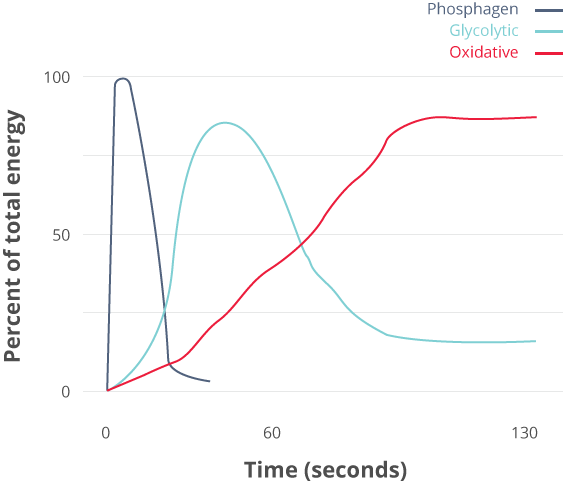In Part 2 of this six-part series on CrossFit’s definition of fitness, Seminar Staff Head Trainer Jenn Hunter-Marshall breaks down CrossFit’s third fitness standard: the three metabolic pathways.
“The pathways are just your body’s metabolic engines; they’re the things that drive or fuel the activities that we may be doing,” Hunter-Marshall says.
These “metabolic engines” are known as the phosphagen (or phosphocreatine) pathway, the glycolytic (or lactate) pathway and the oxidative (or aerobic) pathway. The first, the phosphagen, dominates the highest-powered activities, those that last less than about 10 seconds. The second pathway, the glycolytic, dominates moderate-powered activities, those that last up to several minutes. The third pathway, the oxidative, dominates low-powered activities, those that last in excess of several minutes.

“The three engines are all running at the same time,” Hunter-Marshall explains. “But one is dominant, depending on the activity.”
In CrossFit, we want to train all three engines or pathways without overly emphasizing one at the expense of the others.
Total fitness, the fitness CrossFit promotes and develops, requires competency and training in each of these three pathways or engines. Balancing the effects of these three pathways largely determines the how and why of the metabolic conditioning or “cardio” we do in CrossFit workouts.
“He or she is fittest that’s best balanced across those three metabolic pathways,” Hunter-Marshall says.
Related: